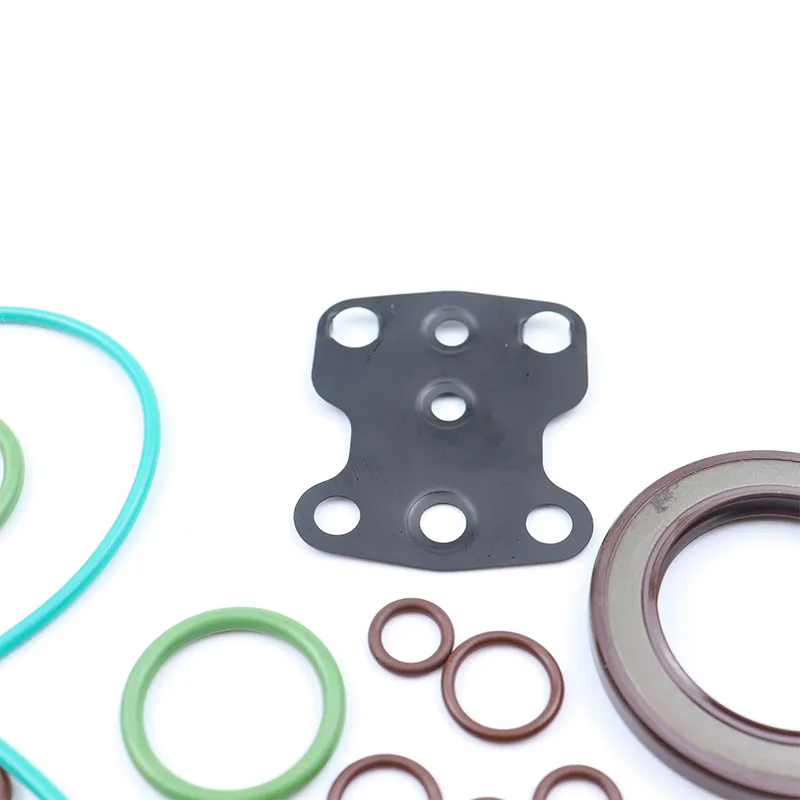Nov . 11, 2024 23:56 Back to list
hydraulic cylinder wiper seal
Understanding Hydraulic Cylinder Wiper Seals
Hydraulic cylinders are integral components in various machinery and systems across multiple industries, including construction, manufacturing, and agriculture. They are designed to convert hydraulic energy into mechanical energy, allowing for the precise control of movement. However, the effective operation of hydraulic cylinders hinges on several key components, with the wiper seal being one of the most critical yet often overlooked elements.
What is a Wiper Seal?
A wiper seal, or a rod seal, is designed to clean the surface of the piston rod as it extends and retracts within a hydraulic cylinder. Its primary function is to prevent contaminants such as dirt, dust, water, and debris from entering the hydraulic system, which could lead to wear, corrosion, and failure of internal components. The wiper seal also helps to retain hydraulic fluid within the cylinder, thereby maintaining pressure and overall system efficiency.
Importance of Wiper Seals
The importance of wiper seals cannot be overstated. Without an effective wiper seal, the ingress of contaminants can cause significant damage to the hydraulic cylinder and decrease its lifespan. Regular wear and tear can lead to hydraulic fluid leaks, loss of performance, and costly downtime due to repairs or replacements. Investing in high-quality wiper seals is essential for ensuring longevity and reliability in hydraulic systems.
Types of Wiper Seals
Wiper seals come in various designs and materials tailored to specific applications. Common materials used include polyurethane, rubber, and PTFE (Teflon), each offering unique advantages. Polyurethane, for example, is known for its excellent abrasion resistance and durability, making it suitable for harsh environments. Rubber offers good elasticity and resilience but may not withstand high temperatures or aggressive chemicals as well as other materials.
The design of the wiper seal also plays a crucial role in its performance. Common designs include single-lip, double-lip, and special designs with bellows or dust shields. The choice of design depends on the application, operating conditions, and the level of protection required.
hydraulic cylinder wiper seal

Factors Affecting Wiper Seal Performance
Several factors can influence the efficiency and lifespan of wiper seals. Temperature fluctuations, the type of hydraulic fluid used, and the presence of contaminants in the operating environment can all impact seal performance. High temperatures can lead to softening and swelling, while low temperatures can result in hardening and loss of flexibility. Similarly, the chemical composition of hydraulic fluids can either enhance or deteriorate the seal material.
Proper installation is also crucial. Misalignment or improper fitting can lead to premature wear or failure of the wiper seal, underscoring the need for trained personnel during maintenance and repairs.
Maintenance and Replacement
Regular inspection and maintenance of hydraulic wiper seals are critical for ensuring effective operation. Operators should conduct routine checks for signs of wear, such as cracking, fraying, or deformation. If any issues are found, it’s imperative to replace the seal promptly to avoid further damage to the hydraulic system.
When replacing wiper seals, it’s essential to choose high-quality components that meet or exceed the manufacturer’s specifications. Additionally, always ensure that the cylinder and rod surfaces are clean and free from damage to facilitate proper sealing.
Conclusion
In conclusion, hydraulic cylinder wiper seals are vital components that contribute significantly to the performance and longevity of hydraulic systems. A thorough understanding of their importance, types, and maintenance can help operators prevent costly repairs and ensure smooth operation. Given the challenges faced by hydraulic systems, investing in high-quality wiper seals and adhering to maintenance best practices is crucial for achieving optimal performance in any hydraulic application. Investing in reliable seals is not just a cost-saving measure; it's an essential step toward ensuring operational efficiency and reliability in hydraulic machinery.
-
TCN Oil Seal Metal Ring Reinforcement for Heavy Machinery
NewsJul.25,2025
-
Rotary Lip Seal Spring-Loaded Design for High-Speed Applications
NewsJul.25,2025
-
Hydraulic Cylinder Seals Polyurethane Material for High-Impact Jobs
NewsJul.25,2025
-
High Pressure Oil Seal Polyurethane Coating Wear Resistance
NewsJul.25,2025
-
Dust Proof Seal Double Lip Design for Construction Equipment
NewsJul.25,2025
-
Hub Seal Polyurethane Wear Resistance in Agricultural Vehicles
NewsJul.25,2025
-
The Trans-formative Journey of Wheel Hub Oil Seals
NewsJun.06,2025
Products categories
















